#sunlight requirement for citrus
Text
Lemon
Lemon

Lemon is a citrus fruit with a sour taste. India is the largest producer of lemons in the world. The scientific name of plant is citrus lemon. Citrus is native to Asia. A lemon tree is a small tree or dense shrubby plant. Citrus fruits are mostly found in tropical regions.
Varieties

There are different varieties of lemon grown worldwide. Popular varieties such as Meyer, primofori, Verna, bearss lemons and baboon lemons.
Meyer lemon

Meyer citrus fruits is a hybrid variety crossed between lemon and mandarin orange. This lemon tree is dwarf species with a quick fruit-producing variety. It has smooth golden skin and grows at a height of 6-10 feet.
Primofiori lemon

These citrus fruits have a soft peel with a good amount of juice. It bears a medium to small, yellow colour. Large and hardy lemon tree. Grows up to 19 feet. The plant gives citrus fruits for 20-30 years.
Verna lemon
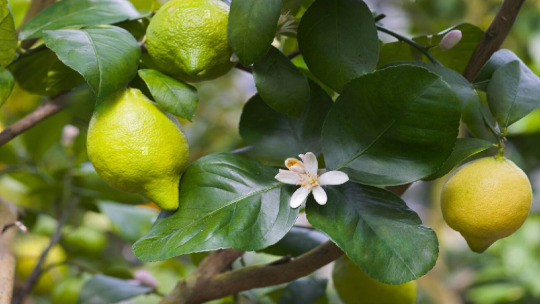
Verna citrus is almost related to the eureka variety. It contains fewer seeds and a high amount of juice. This lemon tree is a vigorous nature plant with good productivity. Verna is a self-compatible species.
Bearss lemon

Bearss variety is one of the most popular varieties. Citrus plants have a thornless branch. It has a high quantity of juice content. Fruits are round to oval shape.
Baboon lemon
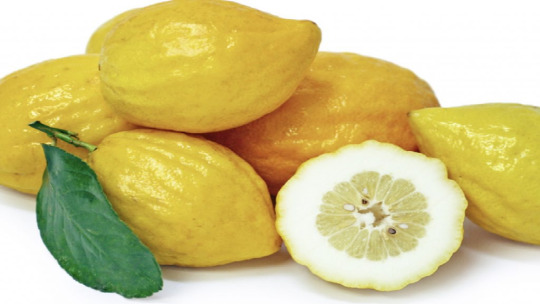
Baboon citrus has bright yellow skin, a slow-growing compact plant and a thick rind. Citrus fruits are knobby and highly acidic.
Soil
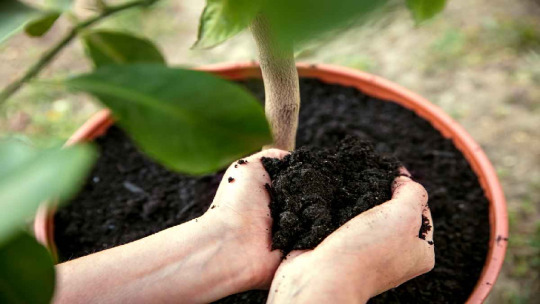
This plants prefers grow in all types of soil. A simple potting mix should include 40 per cent coco-peat moss with 20 per cent compost like decomposed cow dung or vermicompost.
Watering
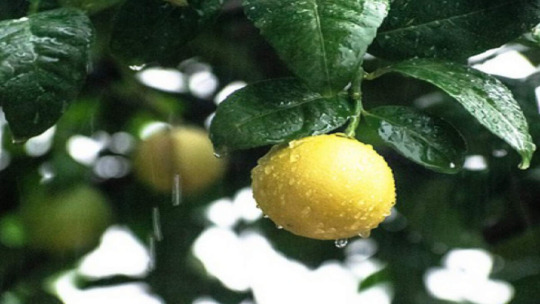
The watering frequency of course depends on the zone. Water it deeply and thoroughly so that the entire root system is drenched with water and water comes out of the drainage holes. Overwatering can result in root rot and death of the plant.
Sunlight

Growing citrus plants on the balcony or on the terrace, location is very important because these trees need full direct sunlight of at least 6 hours for the best result.
Fertilizer
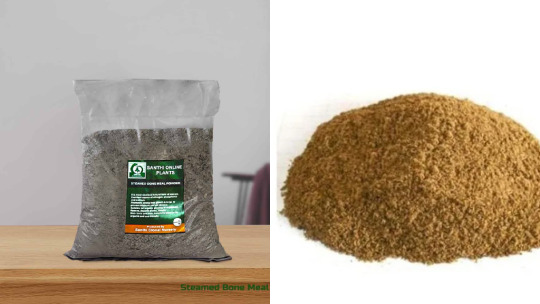
During the time of fruiting add one handful of steamed bone meal powder which is very inexpensive. Add banana peel fertilizer once in 15 days to supplement good potassium.
Pests and diseases

Improper care can cause pests like aphids, mealy bugs and whiteflies. Citrus canker is a major disease.
Control
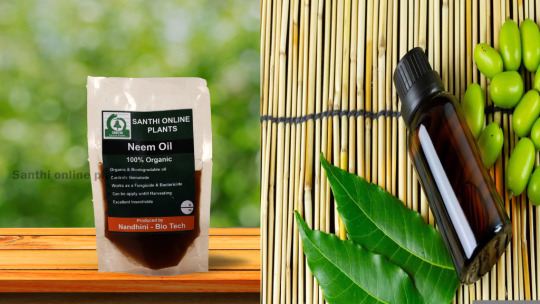
Best in prevention by spraying neem oil once in 15 days (5-10ml neem oil in one litre of water)
Repotting
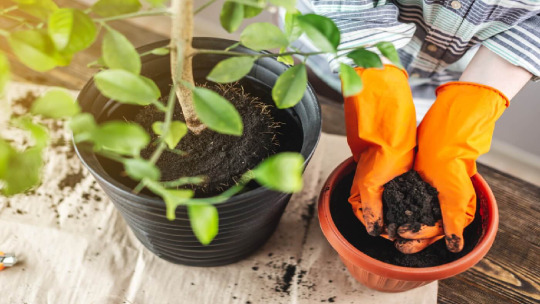
To maintain a healthy plant, citrus trees can be repotted once a year.
Pruning
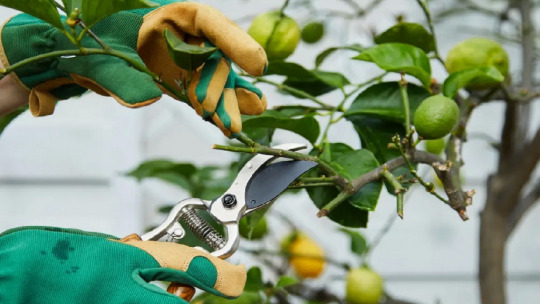
To prune damaged and dried leaves to promote vegetative growth. Trees pruned prior to blooming.
Benefits
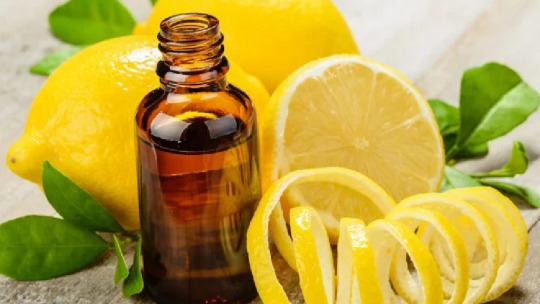
This plant helps in weight loss, and reduce the risk of heart, kidney stones and digestive issue.
This fruits are used in foods and cleaning products.
Helps clear skin and boost immunity.
Beneficial for throat infection.
It has a good source of vitamin C.
"Love the planet green to spend a happy life"
Lemon eco-friendly plant
Blog compiled by Santhionlineplants
#Baboon lemon#baboon lemon#Baboon citrus has bright yellow skin#Soil#soil for citrus plant#Watering#watering#Sunlight#sunlight requirement for citrus#Growing citrus plants on the balcony or on the terrace#location is very important because these trees need full direct sunlight of at least 6 hours for the best result.#Fertilizer#fertilizer#Pests and diseases#pests and diseases in citrus#Improper care can cause pests like aphids#mealy bugs and whiteflies. Citrus canker is a major disease.#Control#neem oil#Best in prevention by spraying neem oil once in 15 days (5-10ml neem oil in one litre of water)#Repotting#repotting citrus plant#To maintain a healthy plant#citrus trees can be repotted once a year.#Pruning#pruning of lemon tree#Benefits#benefits for citrus fruits#This plant helps in weight loss#and reduce the risk of heart
0 notes
Text
Lemon
Lemon

Lemon is a citrus fruit with a sour taste. India is the largest producer of lemons in the world. The scientific name of plant is citrus lemon. Citrus is native to Asia. A lemon tree is a small tree or dense shrubby plant. Citrus fruits are mostly found in tropical regions.
Varieties
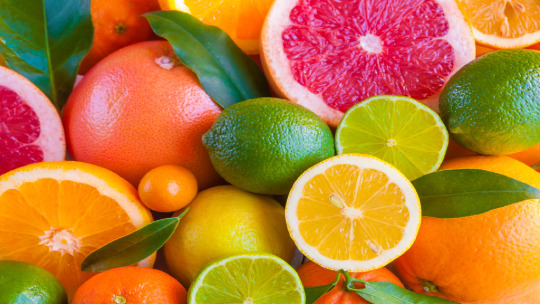
There are different varieties of lemon grown worldwide. Popular varieties such as Meyer, primofori, Verna, bearss lemons and baboon lemons.
Meyer lemon

Meyer citrus fruits is a hybrid variety crossed between lemon and mandarin orange. This lemon tree is dwarf species with a quick fruit-producing variety. It has smooth golden skin and grows at a height of 6-10 feet.
Primofiori lemon

These citrus fruits have a soft peel with a good amount of juice. It bears a medium to small, yellow colour. Large and hardy lemon tree. Grows up to 19 feet. The plant gives citrus fruits for 20-30 years.
Verna lemon

Verna citrus is almost related to the eureka variety. It contains fewer seeds and a high amount of juice. This lemon tree is a vigorous nature plant with good productivity. Verna is a self-compatible species.
Bearss lemon
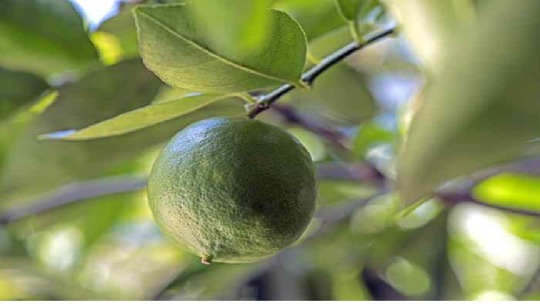
Bearss variety is one of the most popular varieties. Citrus plants have a thornless branch. It has a high quantity of juice content. Fruits are round to oval shape.
Baboon lemon

Baboon citrus has bright yellow skin, a slow-growing compact plant and a thick rind. Citrus fruits are knobby and highly acidic.
Soil

This plants prefers grow in all types of soil. A simple potting mix should include 40 per cent coco-peat moss with 20 per cent compost like decomposed cow dung or vermicompost.
Watering
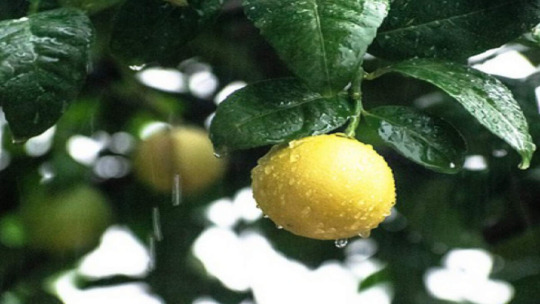
The watering frequency of course depends on the zone. Water it deeply and thoroughly so that the entire root system is drenched with water and water comes out of the drainage holes. Overwatering can result in root rot and death of the plant.
Sunlight

Growing citrus plants on the balcony or on the terrace, location is very important because these trees need full direct sunlight of at least 6 hours for the best result.
Fertilizer

During the time of fruiting add one handful of steamed bone meal powder which is very inexpensive. Add banana peel fertilizer once in 15 days to supplement good potassium.
Pests and diseases
Improper care can cause pests like aphids, mealy bugs and whiteflies. Citrus canker is a major disease.

Control
Best in prevention by spraying neem oil once in 15 days (5-10ml neem oil in one litre of water)
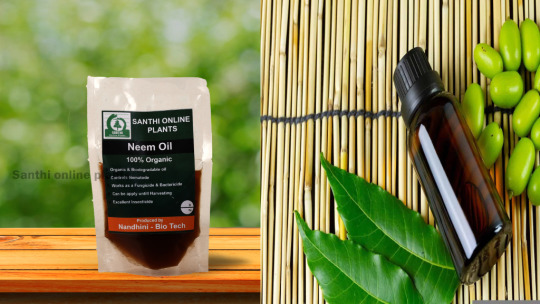
Repotting

To maintain a healthy plant, citrus trees can be repotted once a year.
Pruning
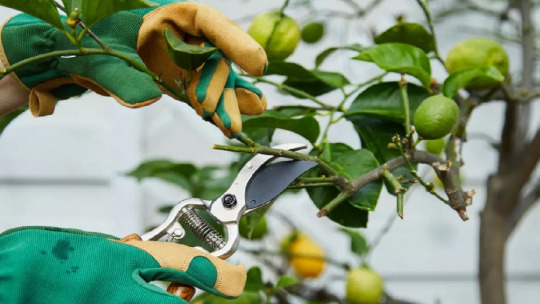
To prune damaged and dried leaves to promote vegetative growth. Trees pruned prior to blooming.
Benefits
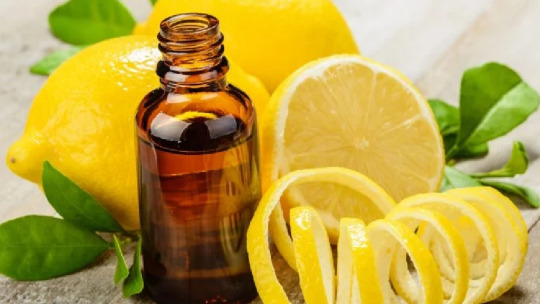
This plant helps in weight loss, and reduce the risk of heart, kidney stones and digestive issue.
This fruits are used in foods and cleaning products.
Helps clear skin and boost immunity.
Beneficial for throat infection.
It has a good source of vitamin C.
"Love the planet green to spend a happy life"
Lemon eco-friendly plant
Blog compiled by Santhionlineplants
#Watering#watering#Sunlight#sunlight requirement for citrus#Growing citrus plants on the balcony or on the terrace#Fertilizer#fertilizer#Pests and diseases#pests and diseases in citrus#Improper care can cause pests like aphids#mealy bugs and whiteflies. Citrus canker is a major disease.#Control#neem oil#Best in prevention by spraying neem oil once in 15 days (5-10ml neem oil in one litre of water)#Repotting#repotting citrus plant#To maintain a healthy plant#citrus trees can be repotted once a year.#Pruning#pruning of lemon tree#Benefits#benefits for citrus fruits#This plant helps in weight loss#and reduce the risk of heart#kidney stones and digestive issue.#This fruits are used in foods and cleaning products.#Helps clear skin and boost immunity.#Beneficial for throat infection.#It has a good source of vitamin C.#“Love the planet green to spend a happy life”
0 notes
Text
I really loved @gwaedhannen ‘s post about wanting more strangeness in First Age Beleriand and I had a post awhile back about potential strange ecology for Middle Earth so I wanted to revisit it with some more thoughts!
Following up to my speculative biology ideas for elves,
Like the last list, these are more jotting down ideas, please please feel free to give me any to elaborate on!
Mammoths on the Helcaraxë and other cold reaches. Tolkien talks of all creatures that walk or have ever walked the earth existing in Valinor and throughout Arda hence prehistoric and extinct species can also exist here. I do also headcanon smaller herds of woolly mammoths and woolly rhinos in northern Hithlum and north of greater Beleriand. Stellar’s sea cows in the frozen waters:(
Early cenozoic aquatic birds such as Hesperornis off the coasts of Balar and Alqualondë.
Enchanted orchards of Valinor; large, seemingly abandoned self containing gardens and orchards. There are fruit tree orchards hidden behind ivy covered walls; some always filled with Autumn breezes, citrus groves always kept warm and bright lined with lemon trees and deep green grass. Except for the Maia who tend them, the only beings who enter the orchards are elves who do so, usually by mistake.
There are places throughout Arda where the Music was not well, loud, enough. They can be the size of a footstep or a field and are not fully connected to the space time continuum. Those who tread on them will end up elsewhere in time or space and will never realize what had happened.
In the great expanses of unexplored Valinor, there are coves, glens, lagoons, and all sorts of other places that seem shift and change, being there one day and not the next. Even while walking through familiar, charted territory, there is always the possibility of ending up in a hidden clearing, covered in hanging mosses and with strange lights all around.
The forests of Beleriand are full of strange, sometimes dark creatures that have never been properly documented. They are the strange hybrids of Yavanna’s creations and Melkor’s corruption and a few have escaped the eyes of even the Ainur.
The underground lakes of Middle Earth, especially around Angband contain blind, hungry beings, nourished by the volcanic soils. Strange fungi and lichen stick to the walls of the caverns and passageways beneath the fortress.
There are hot springs in several locations in Beleriand South of the Ered Wethrin (there are many in the Ered Wethrin of course but these are not exactly relaxation destinations). Namely in Himring, throughout Hithlum, north of Barad Eithel, parts of Dorthonion, in the caves of Androth, and parts of the Ered Luin. Not all of these are used by residents and not all maintain safe temperatures or conditions but some do! In many parts of Northern Beleriand, they're used for bathing and communal relaxation. There are other springs throughout the March of Maedhros and I like the idea of Himring being built around a hot spring. There are hot and warm springs in both Nargothrond and Menengroth. The definition of warm springs differs from hot springs only in average temperature
The caves of Menengroth and Nargothrond allow elves and others access to the strange wonders of the underground world of Middle Earth. They are lit by lanterns and by certain bioluminescent plants. There are windows in key areas that allow sunlight to filter into some of the larger halls and though there are small gardens of species that do not require direct sunlight, some are stationed in the areas where sunlight filters in. A small tributary of the river Narog flows directly through one of the great halls of Nargothrond. Its flora and fauna remain untouched by the elves and algae and aquatic plants as well as small fish, salamanders in their early stages, and stranger creatures are visible to see for those who walk along it.
In realms with Ainur or certain Eldar rule, natural life may not follow typical laws. Melian has great influence over the biodiversity and climate of Doriath for example even without meaning to.
The horror potential of the boundaries of the girdle or of Nan Elmoth. Time and space distorting, the forest becoming a maze, bird calls confusing and disorienting unwary or unlucky travelers
The Ered Gorgoroth, the eerie, mysterious mountain range, bordered to the north by Dorthonion and to the south by Nan Dungortheb. It was said the spawn of Ungolian haunted these mountains and the valley. I have some more posts on this but I've always imagined there being many pools and meres in Ered Gorgoroth, many harmless though frigid and some completely corrupted by the powers of Ungoliants spawn and other beings. Unfortunately, it’s not always possible to know which was which until it was too late.
Chemical reactions causing glimmering or colorful water. Elves learn carefully when this has occurred due to natural phenomena and when it is the result of unnatural influence or Ainur presence.
Salt lakes and landlocked waters mimicking ocean conditions. I’ve always imagined there being a lake like lake Baikal in the March of Maedhros
More Bioluminescence
The realms draped in dragon reek especially around Nargothrond. The pools of Ivrin are ruined by Glaurung and they are the source of the river Narog, the largest tributary to Sirion. The entire land could be poisoned. I imagine that plants wither or lose color, birds and frogs stay silent, animals are thrown off of their natural cycles, The orchards in the hills barren or producing foul fruit, strange happenings resulting from drinking from the river Narog or even eating animals that drank from it…
Alternatively the effects of the water where the power of Ulmo is still strong such as in Nan Tathren or the Twilit Meres
#the silmarillion#beleriand#musing and meta#Valinor#Doriath#ered gorgoroth#I hope these are ok I’m very tired
90 notes
·
View notes
Text

I cant tag you for some reason @acesatyr but I have typed all this up. I will get to fishing and foraging at some point, But this was already really long, lol.
I had originally written this in another word doc and realized I had typed over six paragraphs about seeds and germination alone. I really like farming.
Overall, this is mostly the generic info; I can detail or explain anything in depth, but I’m summarizing the important stuff, and the details are easily researchable. :)
A Revised and Bullet-Pointed Essay about Organic Apocalyptic Farming
Seeds, the basics:
-Stock up on seeds, they come in packets and are usually cheap depending on where you get them from. I like to store seeds in a mason jar, with a tightly sealed lid. It’s important they’re dry, and if possible, refrigerated. if not, any cold, dark, dry place will do.
-Germination is an easy process, DAMP (not sopping wet. DAMP) peice of thin cloth or paper towel, seeds laid out evenly, and put into either a ziplock baggie or something like a pyrex container. Again, air tight, low-mid light, warm (not hot, not direct sunlight) enviroment.
-if you see a lil mold it’s okay, as long as the root sprouts they’re still viable.
Plants I would Reccomend:
-Peppers are great because they grow quickly, can be canned or stuffed and add a lot to you meals and food. They also don't really take up as much room as some of the other plants i'm about to list. They aren’t the most filling and you cant live off of them but if you want to improve your quality of life or make a lot of money at the end of the world I guarantee you anyone who can actually cook or has the spices and foods to do it is set for life. I would legitimately kill a man for my mom’s pepperoni stuffed pickled peppers. I stabbed my brother over a jar once I am not kidding.
-Pretty much any kind of spice or herb really, I would HIGHLY recommend growing lavender, mint, thyme, and anything lemony or citrus scented, as I mentioned on a previous post, they’re good for pest control. lavender is a very temperamental plant, but most herbs, once ou get them going can be pretty hardy for lil leafs. Also, depending on the amount you’re growing of each most of them don’t take up too much space. Also basil cause it smells nice and I told you to.
-Corn, wheat, and any kind of grain is obviously a good idea if you want bread, but all of them are pretty difficult and require a lot of space. Potatoes are great because they can be used to make bread and alcohol as well.
-Zucchini, eggplants, tomatoes, and summer squash, and pretty much any gourd/melon/squash plant are easy to grow, but keep in mind many of these are expanding and/or vine plants and require a lot of space. They make a lot of food, but tomatoes and cucumbers in particular will actively choke other plants. Like vines wrapping around and leaves growing over top and roots entangling level of choking. Keep apart. but they’re good for you. eggplant, tomato and cucumeber are the highlight here.
-For leafy greens kale and chard are super easy to grow and grow pretty fast. Like any leafy green, too much sunlight will scorch them so be careful. I like to grow chard in an old (was some kinda biohazard barrel my dad stole from some pharmaceutical company, and cleaned out) cause it’s more than deep enough for the roots, but also wide enough to grow plenty. Also kale is high in vit c so if you don't live somewhere tropical you won't die of scurvy :)
-If you plan on raising animals or having a crop FIELD and not a PLOT, then grow long grass into hay, because it is good feed, but can also be used to cover ground to protect from birds. If you sow seeds by yeeting them into the dirt, birds will eat them if you don't cover them and you will die hungry.
-If possible, Alfalfa is also good for animals ( in small quantities) because they like it, or sunflowers. you can eat sunflowers, they produce a lot of seeds adn the seeds can be used as feed. ( same with corn.)
-Mushrooms. can be dried, easy to grow, grow really fast, and can be used as filler for meat dishes. (you can also grow the drug kind because it’s the end of the world and no one is going to stop you)
-tobacco for tabacco
AMNIMALS:
-unless you have a lot of very protected land you’re going to want animals that are small and potentially multipurpose.
-chickens are great because they dont need an exorbitant amount of space, can be used for eggs and meat, their feathers can be used for a number of things, if you dont like eating chicken guts (whats wrong with you) then they can be used as fertilizer, bait or as part of stock, and the bones can also be used for broth or to make small simple tools like needles or pen nibs. However, they actually need a more varied diet then you’d think. if you dont have calcium powder, their own unfertilized crushed up eggs, or scrambled with the shell is good for them once in a while, or chopped up leaves from your plants. Otherwise, a mix of corn and seeds is pretty good. DO NOT feed chickens wheat, oats or bread. Once in a while maybe, as like a super special treat, but too much can be harmful. Also, they eat bugs so they can just be outside if you’re okay with that.
-Goats produce milk, fur/wool (not all breeds do both, most don't do both, actually) and they’re more portable than cows. they also take up less space. A big downside is that goats are not only social animals, but they also need a good bit of stimulation and activity and they can be pretty noisy. My uncle built a jungle gym pyramid for his goats, but be warned, Joe Bob chewed his way out of the barn and needed rescuing from the top of the tower in the middle of a hurricane once. Goats will pretty much eat anything, and their poop is good for compost, Joe Bob and his siblings pretty much live off scraps and they’re happy lil dudes ( ladies actually, Joe Bob is the only boy)
-Rabbits! (the rabbit in raider rabbit is actually because i used to raise rabbits and am fond of them as a farm animal and because nobody can pronouce my name so they just call me Bun but we dont talk about that) probably one of the quietest animals you can keep on a farm, they can be kept in cages, breed quickly, can be used for fur, leather (rabbit and goat leather is great for making paper and cloth, not really good for protective leather) meat, and bones. The biggest issue I can see in the event of a wasteland survival situation is rabbits need a lot of clean water, salt and if you get angouras they pretty much need constant brushing. Be warned, if you dont know how to properly care for and breed them the females will castrate the males or eat her babies :) it is just a traumatizing as it sounds :) I speak from experience :) A good and cheap meat rabbit is the california white rabbit, they're about small to med size, and really simple to look after. Angouras are not great for meat, but their fur makes amazing wool. They eat veggies ( not carrots, too much sugar) oats, hay, their babies, and other leafy greens.
-Quail are something im not super familiar with that was my sibling’s thing, but from what i understand they need less space then chickens, and they’re good meat birds. eggs can be good for feeding other animals, but they’re not really good for much else. Also they’re really fucking loud and will fight each other so maybe not?
-Ducks are a lot like chickens, again, all of them can be eaten or used, and also eggs. eat more leafy greens and stuff and really like having somewhere to swim, better for more open environments. Ducks like to eat a lot and will get really fat really quick ( not a good thing) so be careful. however, if they imprint on you, they will follow you everywhere which makes rounding them up easy.
-Fish are great because their water can be cycled and the yuck water can go to the plants, which is great cause all that fish poop and algae is really good fertilizer. Fish are good for you and I love them. An while they’re not easy to port around, if you feed them micro worms or lil shrimps you can grow their food mostly indefinity and freeze it even. Also ive never heard any fish ( other than that one pufferfish) make noise. keep in mind, you will still have to maintain the water levels and the ph and all that, and they can take up a lot of space.
WHAT METHOD? HOW DO THE FARM? OTHER?
-this is pretty much up to you, I’m a really big fan of hydroponics, but i typically stick to “recycle farming” which is basically using whatever I have on hand and getting creative.
-if you’re going to use a plot of land, its a good idea to make sure you have a fence that goes around, over and under. Pests like groundhogs, rabbits, deer, ghouls, and myself will do more then just walk up and take you plants and animals.
-I recommend quiet animals that can be stored in cages and indoors to avoid larger predators, but any animals will attract them. Bears will break into pens, so if possible either store them INSIDE INSIDE, (like concrete building) or outside in a pen so you dont die.
-Living in the wasteland, or growing up with parents that think it basically is will teach you to utilize anything and everything. bottles and cans are great pots, old trashcans can be used if your dad wont steal chemical barrels from your local pharm plant for you, tires can be shredded into mulch, old rebar is my favorite thing for climbing plants ( sturdy, easy to stick into the ground and remove, pretty source able) Animal parts can be used for fishing bait or fertilizer, corn husks and other dry leaf litter can make good ground cover is hay isn't an option, ect.
-Plastic sheets and table cloths with holes cut in them for the plants are great for vine plants to grow through.
-scarecrows ain’t shit. Most birds are too stupid to notice and the ones that will are smart enough to figure out it’s not real pretty quick so all you’re doing is wasting good clothes and materials and scaring the shit out of yourself when you forget and look out the window and see a giant man in your field. Get a cat.
-it’s the apocalypse. grow weed.
How source plant food?
-poop and leafy plant scraps. animal poop, your own poop, your neighbors poop, poop. plant scraps, leafy greens, peels, rotten material.
-Get a big plastic tub or my favorite stolen barrels and shovel in some dead soil, layer in some plant scrap, dry leaf litter or corn husks, poop, leaf litter, and add creepy crawlies if you can. give a stir or shake every so often.
-avoid flies. as gross as it is, it’s a good idea to keep it warm, moist and humid, so very closed to avoid them.
-you can also add egg shells to give some calcium to your bug buddies.
-corpses.
What do I keep? how do I use it? (animals)
-egg shells are useful for a number of things, dried and nicely crushed they can be used for calcium for other animals. Or protection spells.
-bones for the same thing just don't feed the animals to themselves. I joked about this with the rabbits a bit ( a little cannibalism with them is inevitable and wont hurt them, but still) but cannibalism can lead to a lot of really bad neurological conditions that can harm you as well if you consume their products. Same with chickens, you feeding them scrambled eggs and shells once in a while is good for them, but if they start consistently eating their eggs you need to seperate them for a bit.
-fur and skin are great, esp for tanning, hides can make all kinds of things from paper, to water pouches and other bags, and fabric in general. being able to make cloth and leather is something a lot of people really overlook.
-Bones but for tools. Having a good needle and thread is really underestimated.
-Intestines can be used to make sausage, and other things.
-i will eat the chicken liver if you don't want it but it’s your anemia.
-make jerky/salted meat. both wont last forever, but you dont need to freeze it if you dont have power and will last longer then raw or cooked meat. salt cured meat lasts about 2-3 weeks, so if you’re solo or a small group and you did what i said and got small animals you wont be wasting food, and you dont have to butcher something every day.
-jerky can last a lil longer if stored properly, say it with me now! *air tight containers* you might get a solid month or so out of jerky, and it can mostly be rehydrated, or eaten as is.
-rendered animal fat or tallow makes good cooking oil, and while a little time consuming is not super difficult.
-make butter and cheese, not for survival, but quality of life.
Help I grew to many plants!
-can them, dumbass.
-fr though, canned foods can last a decent amount of time and can be really useful if you live somewhere with a winter, or can farm constantly. I mentioned already, but canned stuffed peppers are a favorite of mine, along with pickled eggs, which I make pretty regularly because a world without pickled eggs is the darkest thing i can imagine.
-feed them to your animals or back to your plants.
-throw them at your friends. (you haven't lived until you’ve hocked a rotten pumpkin at your little brother)
-dry them, fruit leather and veggie chips can be rehydrated and stored even longer than certain canned or preserved foods.
What else?
-learn how to purify water. there’s a million non tech versions, but in a sinch, the boil method is good if you just need to water plants. just dont pour boiling water on your crop.
-do use boiling water for weeds though. you can also feed weeds to your animals, but boiling water is just water, it’s not going to kill the soil or poison you.
-learn to fish and forage, theres a whole lot of things that aren't easy to grow or raise that can be tasty and good for you.
-learn to make fire. be prepared to put out fire. Dry crops will burn for days, so keep them watered, but you need to be able to burn exccess compost and cook.
-farming smells so bad. I love farming but animal poop, rotten veggies, innards, decay and compost, burning compost smells. if you cant stomach it and want the easy way out, thats called starvation or you better be beefy and prepped enough to raid others. or both, gorw your shit and steal from others, i dont care.
-forgot to mention earlier, but fermented foods like kimchi, kombucham etc are really good for you so yea. I might also teach you how to make kombucha cause my mom made me drink it so by god ill make you drink it too. ( i actually love it and it's good for making vinegar.)
-And forgot, legumes, like beans, peanuts, letils etc are really good plant protein. just not fun to grow, (ecept for beans. beans are actually very fun to to grow.)
#apocolyptic#doomsday#doomsday preppers#i was raised like this#farming#plants#farm animals#fr though if your unwilling to butcher animals or handle manure you better be prepped to grow a lot of spinach and legumes#to make up for the protien and iron loss#also farming is really hard but very rewarding
52 notes
·
View notes
Text
the red means i love you {c!Technoblade}
Summary: Yandere!Technoblade. Fake gods are worshiped with wine and flowers; real gods require blood.
Need to Know: They/Them. Yandere!Technoblade / Enabler!Reader. established relationship. DARKFIC & LIGHT SMUT PLEASE READ WARNINGS VERY CAREFULLY !!
A/N: 2755 words. hey holy shit read the warnings i mean it. this really isn't for everyone. but anyways i started this months ago lol and it makes me feel some type of way. probably OOC as all fuck. if you do end up reading this, 1. is it coherent? 2. is it any good? :/
Warnings: Romanticisation/Rationalisation of Yandere Behaviour; NON-GRAPHIC SMUT (no genitals specified), GRAPHIC KNIFE-PLAY BLOOD-PLAY AND PAIN-PLAY, SEMI-VIOLENT BODY WORSHIP?? OBJECTIFICATION. Violence. Scarification. Bondage. Mutual Obsession. Dead Dove: Do Not Eat
Citrus Scale: ❤️ GRAPEFRUIT ❤️
{ yandere!dsmp masterpost }
He gets antsy in isolation; the voices are hungry, and fresh bruises will never compare to cherry-red blood on the snow, on his hands, like wine the way you'd seen him savour it before the regret flashes across his face. Blood for the Blood God cheered like the fleeting high was worth the exhaustion the whole ordeal brought with it. You'd seen it time and again; violence simply for violence sake was tiring. It's been a long time since he'd felt like killing for anything or anyone that wasn't you, and since you're by his side in the tundra, there was little reason for him to jump to violence, or at least, violence you didn't relish in.
Because you basked in reminders of his power, finesse, how easily he could wreak devastation, and there was something thrilling about when he turned those skills upon you, knowing he loved you too much to break you beyond repair. But there was also something intoxicating when he almost would, when he'd spend days lavishing praise upon you as he cared for you, tended to the wounds he'd inflicted, nursed you back to health.
In the split second after he'd land a hit while sparring, and he's breathing heavy, eyes wild, and the pain hasn't hit you yet, you see the way his eyes light up. This time it had been a deep gash in your cheek, which had genuinely startled you, and he turns immediately, apologising, saying he lost himself in the moment.
"Don't worry about me," you tell him as he takes your face in his hands, the contact stinging as blood begins to seep from the wounds, "you wouldn't kill me," you assured him, and it's as if he needed to hear the words out loud to believe them, his gaze softening, your hands resting on his hips, "and if you did, we both know you would have your reasons."
"You're so..." but he can't even finish the compliment, syrupy affection in his eyes as he looks at you, still holds your face. He can't find the words in this moment, cant say what you know he's thinking, 'you bleed for me' but you can still hear it. His gaze is endearing as he looks at his own hand on your cheek, before holding it up in the sunlight, your blood shiny and slick on his fingers.
You take his hand in yours, love unspoken but well heard as you softly kiss his knuckles. Carefully, you bring his hand back to your cheek, the stinging wound and the warm, red proof that you were alive. When you pull him in for a kiss, he's holding your face tighter this time, the pressure searing beneath his touch as you kiss him; the tense set of his shoulders had eased, however, and to you, that's all that mattered.
The moment, he tells you later, soothed the voices, at least for the time being. You, stretched out next to him in bed, carefully applying bandaids and ice packs to your more recent training wounds, make a noise of interest.
"I don't like hurting you like that," he admits, voice low, sounding almost remorseful. Instinctively you turn your attention from your bandage application, to him, curling an arm over his chest, resting your chin on his shoulder.
"Like what?" Because he's not one for admitting remorse, especially not about something like this; you've got well cared for scars to the contrary.
"Like in a way we haven't discussed," it takes him a long moment to find the words, but you know its still not entirely the truth; as if your awareness of the altercation was crucial to his enjoyment of it. He got caught up like this a lot, when injuries were accidents. The problem was that it wasn't his intention, it wasn't premeditated; you never minded the lack of warning, he'd had your complete trust for as long as he'd had your heart. You knew what he was capable of, but that he loved you, that's why you trusted him. He, however, knew what he was capable of, and loved you, which is why accidents scared him half to death.
"But it felt good, didn't it? Better than usual," as you say that, he looks to you, sharp and calculating, gaze focused on the patching job he'd done on your cheek earlier, "do you want that? The blood?"
"I don't need it," he says softly, kissing your nose, "I like what we have, I like training with you, you don't-"
"But do you want it?" You ask, reaching up to touch his cheek, your fingertips feather light as you trace where the scar would be on him, and his eyes close for a moment. He leans into your touch.
"The things I crave," he begins, before amending with the faintest smile, "the things other than you, don't matter out here; I'm keeping us safe. The violence for the sake of blood, it's exhausting to keep searching for," he groaned faintly, before adding, "and dangerous," his gaze slides to you, and you know he's not concerned about himself. You, however, held his face for a long moment.
"And what of blood without violence?" You ask softly; he goes very still, breath caught alongside the thought, "Blood for the Blood God," When you lower your hand to his chest, his eyes open. Dark and thoughtful, there's hesitation there, confusion almost.
"You don't know what you're offering," his tone is like ice water, a shock to your system with how cold it is. There's no warning when he sits up, out of your embrace, leaving you cold and confused, "I'm trying to keep you safe." Accusatory, as if you're in the wrong, as if you should know better.
He leaves before you've even formulated a response, tense and seemingly furious and you have no idea how or why the situation changed so dramatically. It's always hard to try and sleep alone nowadays, but you don't have much of a choice.
Techno comes home still wreathed in the heat and horrible sufler smell of the Nether, sweet words on his lips as he curls into bed beside you. None of them are an actual apology, but he's got a talented hand between your thighs as he tells you he loves you, and it's enough to ease your fretting, half asleep mind for the time being.
It seems safer to leave that topic well enough alone for the time being, but it doesn't leave your mind. The thoughts that begin to haunt you encroach on every part of your life. Intrusive, idle chatter starts up when you're training and the sun glances off his blade and catches your gaze, and won't shut up as you're preparing dinner together, and the chatter roars with approval whenever you so much as get a paper cut. Perhaps this is what it's like to experience the voices that clamour for blood and violence in your love's head, though more and more you're sure it's your mind's way of encouraging you, because there are moments where Techno looks at you, eyes dark with a barely concealed desperation, and all thoughts in your mind go silent.
"Don't look at me like that if you're not going to do anything about it," you teased, catching him in one of those dark, thoughtful moments he was becoming increasingly prone to. Techno, however, is pointedly quiet, averting his gaze, light from the fire making him seem somehow even more dramatic, "you've been trapped in there a lot lately," settling yourself on the sofa beside him, you curl up by him, cheek against his shoulder.
Still, he remains quiet.
The crackle of the fire fills the otherwise silent room, though Techno shifts to wrap his arm around you, pulling you a little closer. You feel when he presses a kiss to the top of your head.
"Wish I could be trapped in here," he mumbles against you, drawing circles on your shoulder with his finger, "figure out how you live like you don't feel fear."
"I have you," you respond with absolute, blunt sincerity.
"What?" It sounds as if he genuinely didn't expect your response.
"I have you," it comes out a murmur, angling your face to his, nose to nose as your gaze locks with his, "why would I ever feel afraid." His pupils are blown so wide with want that you're half afraid you'll get lost in them. He must feel the erratic beating of your heart, must know the thrill you feel in this moment -
"You should fear what I want to do to you when you say things like that," his voice is low and you feel like you could melt at the implications, which was probably not his intention, but you didn't care.
"And yet you don't even do anything," you sighed languidly, eyelashes fluttering as you find your gaze dropping to his lips, "what a tease -" but then there's two fingers in your mouth, effectively shutting you up.
"And if I tore you apart, would that make you happy?" He practically snarls, but you angle your head to make sure he can see the dreamy look in your eyes. After a few moments of intensity, he moves his hand from your jaw, your mouth, to grip your thigh, to pull you closer.
"Is it what you want?" You feel elated, all kinds of heady and fire-warm. This is the precipice, the moment where he yet again understands you truly mean you'd do anything for him, and his hesitation will evaporate -
"More than anything," he admits, as if his honesty had left him breathless, and he kisses you hard before you have time to think. Pulling you into his lap, he takes the opportunity to fist his hand in your hair. When he pulls hard, it's the first of many wonderfully aching, stinging, bruising moments of the night.
And you learn that there is no blood without violence, not for the Blood God...
There's a sharp pain the moment the blade first breaches your skin, metal along your sternum cool before the pain brings with it heat. You try to bite back your yelp, but can't quite manage it. You've been cut before but never so deliberately, not by someone who looks at you like Techno does now. Techno, sitting carefully on your thighs, doesn't seem to acknowledge it; he drags the blade down the centre of your chest with an almost agonising unwaivability, tears springing to your eyes, trying not to squirm, to make the pain worse.
"Techno," you whimper, his name escaping you almost involuntarily, nervously tugging at your wrist bindings above your head. There's something dark and strangely detached in Techno's gaze as he meets yours.
"I'm okay," you murmur unconvincingly, "I- it hurts more than I thought it would is all, I'm sorry I'm-" though for all your babbling you don't even consider asking him to stop. He presses the flat side of the blade to your ribs and reaches out with his free hand to carefully wipe away your tears.
"You're so good," there's something hungry in his eyes, "so good to me... beautiful like this." And something clicks in your brain; you'd do anything to keep him talking to you like that, looking at you like that.
"More- please, again," you choke out, a desperate gasp as pain and pleasure weave together in your mind. Something about the way you've already begun to beg has his breath catching in his throat, an animalistic noise escaping him. Already his self restraint is all but shredded; before you knew he'd hesitate, or check in with you, but now -
"More what?" A demand for an answer. The blade is ice cold and feather light against your skin.
"Blood, please," stutters from your lips as you try to lean up to kiss him. Instead, he keeps one hand firm on your shoulder against the table, wearing a pleased smile as he instead dips to keys you, "my love, make me bleed."
He seems to derive pleasure from the way you whimper against his lips, your faint noises of pain as he carefully carves into the skin of your sternum while kissing you. It's starting small, he tells you, at least for now, having left a simple geometric pattern on your sternum that he admires as he fucks you. He lavishes you with praise, works hard to get you off but leaves you a bloody mess until well after the afterglow has faded.
When he tells you it will leave a beautiful scar, something inside you lights up with joy, with love.
"I can take more, I -" already you're babbling, offering. He hasn't untied you; the ache of your bound wrists is comfortingly familiar as you allow yourself to be taken care of.
"Don't," Technoblade warns you firmly, looking up from where he's cleaning and dressing the wounds. Even so, he seems calmer and steadier than he's been in a long while, as if granted a brief moment of mental peace after what had just occurred.
"You keep offering something very dangerous, but maybe your naivete is part of why I find you so precious," he pauses for a long moment before leaning in to press a kiss to the edge of the bloody pattern he was responsible for. A thin line of your blood shines by the corner of his mouth as he pulls back and smirks up at you. You're desperate to kiss him, but you knew it would interrupt his care, and you'd probably remain restrained past the point of it being enjoyable.
"Did it help?"
He is quiet for a long moment after your question. Finally, he spoke.
"How much did it hurt?"
"What?"
"Tell me how much it hurt," there was an unexpected dark edge to his voice now, something pleased and almost smug. He's holding bandages but his hands have stilled, "when you begged me to carve into you like that," it's that hunger again, the same you'd seen the moment you'd winced and gasped and squirmed once he'd finally put the blade down in favour of admiring his work, now free hand between your thighs.
Now he's just... admiring you, bound, marked, still comfortable at his mercy. Looking at the angry red lines in your skin, he can see the blood slowly seeping from them, his personal form of art. Carefully, you wet your lips, shifting the barest amount against the still bloodstained linens.
"It was awful," you murmur honestly, "it still is kind of unbearable, more than I expected." He blinks slowly, hands still hovering inches away from your torso. He hears it, you know he hears it, the way you speak so carefully about the pain without a hint of negativity. He's a sudden rush of movement, kissing you with newfound intensity, one hand coming to cup your face while the other he presses flat against the still fresh wound.
"I could kill you, you silly, porcelain thing," he groans, as if turned on by the very idea he's warning you about.
"Could you?" A breathless, wanton gasp escapes you, and it turns to a pained whimper as he presses against the wounds more insistently, which he echoes with a pleased noise of his own, "please, I need you to -"
For the first time in a long time the voices seem sated. They've had their fill of violence, of blood, of you, they're practically sick with how they've gorged themselves on all you've offered for them. But Techno himself? He loves to know just how much it hurts, and loves to make you beg for it nonetheless. He loves knowing how far you'll let him go, how much you'll endure and still ask for more. He loves the proof of your devotion. He will never get enough.
And you?
You want to wear the scars like the proof of your love for him, with pride. You now understand and appreciate the pain he's inflicted on others in your honour. You relish in knowing you can satisfy all he craves in a way that no-one else ever would.
But mostly, you crave those moments, the bloody handprints he leaves on your thighs, the gentle way he caresses the ice cold blade against your skin, and the look in his eyes as you whimper, like you're the only thing in the world that has ever mattered.
#technoblade x reader#technoblade imagine#techno x reader#techno imagine#c!technoblade x reader#c!techno x reader#c!technoblade imagine#c!techno imagine#yandere technoblade#yandere c!technoblade#yandere techno#yandere smut#yandere c!techno#cyltlanp#Spotify
197 notes
·
View notes
Text
Reduce Anxiety in 10 Seconds: Engage Your Senses for Instant Calm
Shaina Tranquilino
January 16, 2024

We all experience moments of anxiety and stress in our lives. Whether it's due to work pressures, personal challenges, or the constant barrage of information we receive daily, finding quick and effective ways to reduce anxiety is essential for our overall well-being. In this blog post, we will explore a simple yet powerful technique that can help you find instant calm within just 10 seconds - engaging your senses. By focusing on what you see, hear, feel, smell, and taste around you, you can quickly shift your attention away from anxious thoughts and ground yourself in the present moment.
To practice this exercise effectively, find a quiet space where you can sit comfortably or stand if you prefer. Take a deep breath in through your nose and exhale slowly through your mouth. Now let's begin:
1. Five Things You See:
Look around your surroundings deliberately and identify five things that catch your attention visually. It could be anything from objects in the room to nature outside your window. Focus on these visual elements with curiosity and interest, allowing them to distract you momentarily from any anxious thoughts.
Example: A painting hanging on the wall, a potted plant on the windowsill, a family photo on your desk, sunlight streaming through the curtains, and a cozy blanket draped over the couch.
2. Four Things You Hear:
Shift your focus now to what you can hear around you. Tune into various sounds present in your environment with an open mind. Pay attention to both external noises and internal sounds like your own breathing or heartbeat.
Example: Birds chirping outside, distant traffic noise, the hum of electronics running nearby, gentle background music playing softly, and the sound of your own steady breaths.
3. Three Things You Feel:
Next, direct your attention towards physical sensations within your body. These could include feelings of warmth or coolness, pressure, tingling, or the texture of objects you are touching. Notice these sensations and let them anchor you in the present moment.
Example: The softness of the cushion beneath you, the warmth of sunlight on your skin, and the gentle breeze brushing against your face.
4. Two Things You Smell:
Engaging our sense of smell can be a powerful tool to shift our focus and reduce anxiety. Take a deep breath in through your nose and try to identify two distinct smells around you. It could be the scent of flowers, freshly brewed coffee, or even the aroma of scented candles.
Example: The subtle fragrance of lavender essential oil and the rich aroma of freshly baked cookies from the kitchen.
5. One Thing You Taste:
Finally, bring your attention to your sense of taste by identifying one thing you can taste at that moment. This might require a bit more creativity depending on where you are but try focusing on any residual flavors in your mouth or imagine something delicious like mint or citrus.
Example: The lingering sweetness of a piece of chocolate you enjoyed earlier or the refreshing burst of flavor from chewing gum.
By engaging your senses for just 10 seconds using this simple exercise, you can effectively redirect your attention away from anxious thoughts and ground yourself in the present moment. Remember that practice makes perfect! Regularly incorporating this technique into your daily routine will help it become an automatic response whenever anxiety arises.
Remember, reducing anxiety is a journey that requires patience and self-compassion. While this exercise may not eliminate all sources of stress from your life, it can serve as a valuable tool in managing anxiety when used consistently over time. So take a deep breath, engage your senses, and find solace in knowing that calm is always within reach - even if just for 10 seconds at a time.
#instant calm#anxiety relief#sensory wellness#mindful moments#quick calm#calm your mind#stress free living#sensory engagement#mindfulness tips#10 second calm#overcome anxiety#anxiety#reduce anxiety
3 notes
·
View notes
Text
Italia
Day 2 - Lemon Frenzy 🍋
Steps walked: 23,862
Flights climbed: 7
Vehicles ridden: 1
Points of interest visited: 1
Lemons spotted: all of them.
Drugs are great. We took some to sleep and it enabled us to get thru the night and wake up comfortable in the morning, ready to face the day.
Our B&B host, Dino, chided us for not telling him ahead of time that we are both vegano, that he could have plant milks for us, and that his wife is vegan. (Of course not as strict now they have a kid because kids make everything harder, he says. “Wait til you have kids,” to which I got to reply with delight “Oh no I’m sterile.”) He was hilariously Italian as he went on and on about mozzarella, erculano, and how we’re going too fast and we go to bed too early.
We escaped long enough to trek thru Pompei to get to a cafe that allegedly had vegan-as-is croissants (unlabeled). If you know anything about me, you know I can’t resist a vegan croissant. We booked it thru town with a minor detour due to some big church thing for Madonna (I can’t believe she tours in Pompei!) to get our croissants where Google translate helped mediate the exchange. We got two citrus croissants that were not labeled anywhere as vegan but the guy didn’t correct us when we asked “vegano?” three or four times.
We checked out and leisurely made our way to the train station - another long walk - only to arrive at the platform at the same time as the train to Sorrento. How perfect! Except we don’t have tickets yet… so we buy our tickets, the train leaves, and we’re forced to wait forty minutes for the next train, only to discover no one ever asked for our tickets and no entry required them. We could have totally gotten on the first train without paying and we wouldn’t have had to wait. Crime does pay, as it turns out.
‘Twas a crowded train ride to the end of the line, where we then had to trudge for nearly half an hour with our bags on cobbled streets and unreliable sidewalks to get to our hotel. (Side note: i wonder why no one ever talks about all the vespas and scooters in Italy. There are so many! I just figured I would have heard about it before this.*)
We checked in to our hotel around lunchtime, ate our croissants illicitly on the balcony (no food allowed in our hotel room), and headed back out. Naturally, all the stuff we wanted to visit was back in the direction of the train station, but a 25 minute walk goes much easier without two backpacks and a roll-y bag with dysfunctional wheels.
To paint the scene, all these walks are lined with more citrus trees than you’ve ever seen in your life and drivers who might not actually run you down but you probably shouldn’t test that theory.

We grabbed a quick lunch at a family owned Italian restaurant and had some tasty food including “the best tomato pie [Dan has] ever had” then continued on my lemon quest.

Walking on our way to a limoncello Lemon grove we passed another one that we were able to walk around in. It was so pretty. A lovely garden with lemon trees, orange trees, olive trees, squash plants, tomato plants, and peppers. They also had a restaurant but we were so full we decided we’d come back for dinner.

On to I Giardini di Cataldo where we had hoped to have a tour and a limoncello workshop but they didn’t have any available for the day. Womp womp. We tasted some limoncello and got lemon sorbet and ate it in their lemon garden before continuing to meander in the direction of shops.

Fortunately I had set a limit as to how many Lemon things I could get for myself and I immediately met that limit so I guess I’m done shopping for the… trip. Except I still need a Leonardo souvenir, I mean let’s not get crazy.

Here I am casually showing off all my lemons.
Another 25 minute walk to the hotel to drop off our stuff. By this point, I can confirm we had already exceeded yesterdays step count.
Just before sunset we walked to a dock overlooking the coast and watched the last rays of orange sunlight disappear behind the horizon. The coast is a steep cliff face that drops off into the ocean, but in the distance you can actually see Napoli looking like an island, in reality just more of the Italian coast. Then Dan’s eagle eyes spotted a bat. Then another. And sure enough within a nook of the cliff, at least half a dozen bats had roused and were feasting. It was awesome. We watched them for a little bit. I think a few more even joined them as we watched. It certainly felt like there were more bats there when we left.



And the days recurring themes of walking and lemons continued as we headed back to La Limonaia, the lovely lemon grove where we had decided to dine. Our wonderful server was very confident about our “vegano” requests and he had the chef prepare dishes for us. For Dan, a lemon vegan cream sauce on linguini and for me, a salad made with fresh veggies from their garden. Those same veggies we had seen in the afternoon as we wandered around the grove. So fresh! And I could totally tell. I slathered my tomatoes in balsamic glaze and enjoyed some of the best tomatoes I’ve ever had. (Also a hilarious thing we’ve noticed here is when they bring you bread it comes in a little paper bag as opposed to a bowl or a plate. It’s so funny.) We drank, we ate, we were merry, all under the lemon trees. ‘Twas in general a near perfect dinner experience and we happened upon it by happenstance. Not only a great way to celebrate Jimmy Carter’s birthday but our 12 year anniversary. Six years of marriage. I can’t believe I’m old enough for that but there it is.
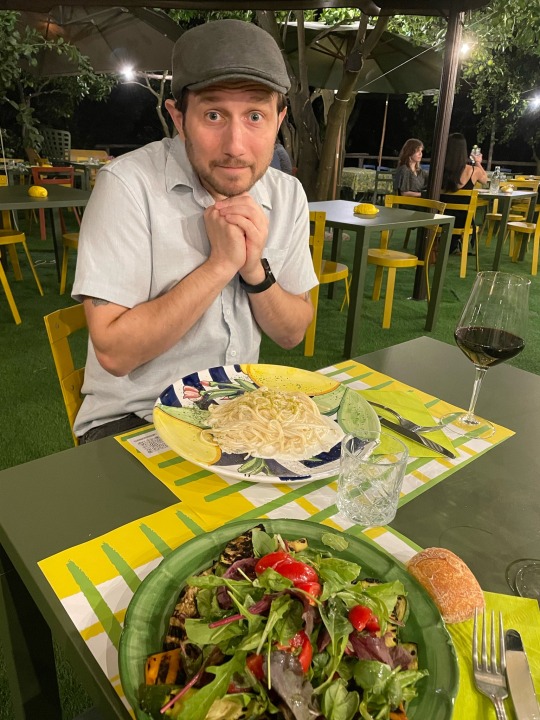
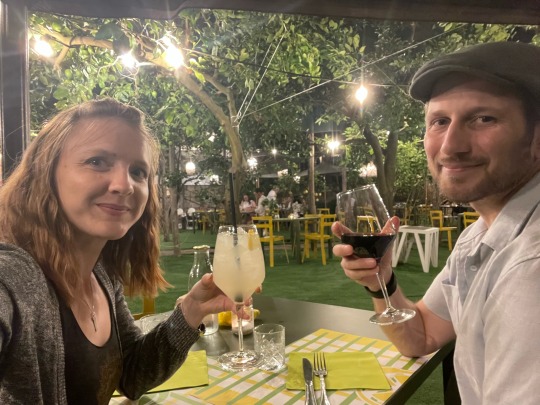
After dinner we met Carol at her hotel which was thankfully in the same direction as our hotel so we wouldn’t have to backtrack anymore. She got us drinks, gave us a lemon souvenir she’d gotten in Capri that day, and she and her group regaled us with stories from their trip. As ours is still near the beginning, theirs is coming to an end. We chatted until we noticed the bartender was waiting for us to be done to leave so we wrapped it up and Dan and I walked back to our hotel to gratefully rest.
*Sarcasm
4 notes
·
View notes
Text
Various growth stages of the lemon tree
The lemon tree is a tasty, refreshing, aromatically scented citrus fruit belonging to the family of citrus fruit.
Growing a lemon plant involves various stages and it takes a lot of time before producing a bunch of fruits. So it is beneficial for a gardener to know the growth stages of a lemon tree before planting it in your garden to grow them quickly and to take the necessary steps during the appropriate growth stage.
So let’s dive into the article below to find out the various growth stages of a lemon tree.
Growth stages of a lemon tree
Lemon seed
The first and foremost growth stage of a lemon tree is the seed stage which means at this stage the lemon tree is in the form of a seed. The seed of a lemon tree is very tiny, oblong along with pointed tips on one side and round on the other side, smooth in texture, and white to yellow-green in color.
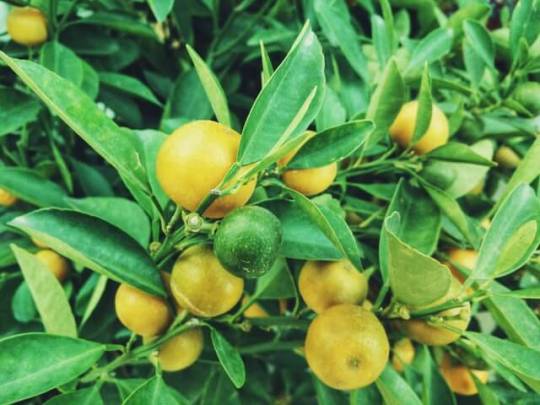
Lemon seeds that are mature are capable of growing. Young seeds are not capable of germination. So before plantation make sure to choose a healthy, high-quality mature seed for plantation for better seed germination.
Germination of seeds
After you have planted a lemon seed, the next step is to wait for the seeds to germinate. During germination, the seeds start to produce tiny roots and small green leaves.
As we discussed earlier, the rate of germination of seeds is higher when you choose a high-quality, healthy seed. Besides, choosing a harder seed also can be effective as harder seeds are a good indication of healthy germination.
If you want to germinate your seeds and grow them effectively, you need to do that in a seedbox beforehand. You can also grow your seeds in a can, bottle, etc. At this stage of the lemon tree, you need to take proper care of the plant.
Young seedling
At the stage of the lemon tree, the plant is actually in the form of a seedling which means it shows some sprouted roots and tiny leaves. As the stem of the plant is very weak at this stage, they require a lot of care during this period, especially to protect them from strong wind and animals.
During this period, the seeds require to be watered regularly, along with it need some fertilizer to be added to the soil. In this way, it can grow well.
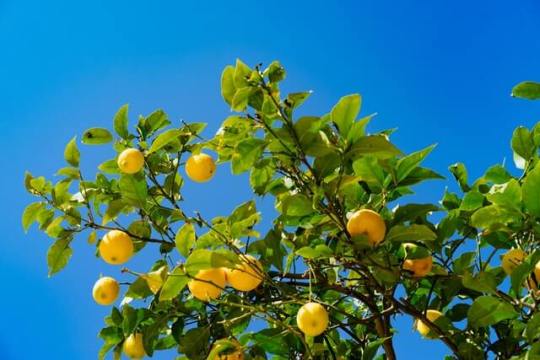
Mature plant
At this stage of growth stage, the plant is older and mature enough. During this time the plant has more greeny leaves and stronger stems. The best plant appears when the plant gets the right amount of sunlight, water, and fertilizer.
During this stage, the plant requires a lot of watering and enough fertilizer. Your efforts can surely bring good flowers to the tree.
Flowering
At this growth stage of a lemon tree, the plant starts blooming with beautiful, smooth, and white flowers. At this time, the plant is 2 to 5 years old.
During this time, it needs regular care of watering and adding fertilizer. Besides, the plant is very likely to be attacked by various insects and pests during this time. So they need to take proper care in this time.
Fruiting
At this stage, the young lemon fruit starts appearing from the flowers. The lemon is green in color when it is young, dark green when older, and yellow when they are ripening. The lemons have smooth skin, good smell, round to oblong in shape depending on the variety when they are ripe.
You should take some adjustments and improvements to produce the best bounty of lemon tree fruit-bearing in the garden.
7 notes
·
View notes
Text
I was writing, but then I came upon the fact that I don’t actually know what a healthy diet for my 300-600 pound reptiles would look like.
If you plan to keep reading, please tighten your seatbelts, not because this is exciting, but because we’ll be taking 90 degree turns at 45mph. This is basically just me researching out loud so people can see my process. Also, I will be mentioning various parts of animals that may make some people queasy.
Useveu are a species of intelligent, flight-capable reptiles that, in adulthood, stand between 6 to 9 feet high on average and weight roughly (so roughly) 300 to 600 pounds on average. They are carnivores, but they live closely to humans, and would therefore eventually incorporate other types of foods into their diets.
(I think it’s worth it to note that the humans who live in countries where Useveu are common almost always have a vegetarian diet. There are logistical and social reasons for this.)
Reptiles like komodo dragons and snakes can eat pretty much every kind of meat. Bones and organs are definitely going to be in an Usevuth’s diet, as well. Reptiles like geckos, however, seem to need veggies, and one thing I read specifically said to make sure geckos are getting enough calcium.
Komodo dragons and snakes eat their prey’s bones, but a gecko isn’t big enough to eat vertebrates. Pet birds, also, are said to need calcium-rich diets, and we humans go crazy for calcium supplements, but again, pet birds and song birds don’t get opportunities to eat bones, and humans don’t exactly make an effort to eat them.
So maybe Useveu won’t naturally need calcium-rich vegetables. And maybe they don’t need to avoid phosphorous if their intake of bone is high enough. But they are a social species living with another social species, and both have relatively high populations, and they have to pay for their food.
Poor Useveu will largely exist off of chicken, eggs, and probably fish for their meats. These are all high in calcium when consumed whole. But there are more dietary needs than that. Useveu are huge animals, and in whatever wild conditions their bodies evolved to cope with, they definitely eat red meat. If their body relies on red meat in their diet but they’re too poor to afford meat from larger animals, this could lead to iron and vitamin B deficiencies.
I think the bottom line for the fact of whether these guys are getting everything they need from a diet of animals is pretty straightforward. If they are consuming healthy animals whole, they themselves will be healthy. This is with the sole exception of deficiencies from being unable to afford red meats. These can probably be compensated for with the purchase of blood (iron, affordable) and whatever amounts of liver (B vitamins, expensive) can be managed.
My questions becomes what non-animal items an Usevuth can eat off of a human’s plate.
I know for a fact that Usevase (males) will have citrus in their diets. But citrus fruits require a substantial amount of water to grow, and in a pre industrial revolution world where there are no freshwater rivers or lakes particularly nearby, these foods become expensive. However, there are trains, which can extend the reach of an affordable citrus belt. Flying to buy or deliver groceries like this would be impractical and expensive, since the quantity of products would be small for such a long distance.
Citrus fruits contain a lot of oils, acids, and vitamin C. Usevase have a bodily use for the oils (which can be harmful to digestion in other animals), and will build a tolerance to the acids. Psoralen, which is a substance that can cause cell damage when combined with sunlight in the skin, would be mostly harmless to Useveu thanks to their scales.
So citrus doesn’t pose a threat to my reptiles that I have to worldbuild around. Then I look to staples of human vegetarian diets that will grow in the climate I’m looking at, as these will be foods Useveu are most likely to ingest.
Vegetarian staples are largely going to be protein-rich foods, like lentils, beans, quinoa, and eggs. My climate can’t grow quinoa, but soy and lentil are fine. Another good food would probably be brown rice, which can grow in this climate, as well. Looking at its contents for things that could hurt a reptile, I see unfamiliar things like selenium and manganese, but both are water soluble and will be passed by the body once it has the amount it needs. Bread is another thing that will likely find its way into an Usevuth’s diet, and wheat is both accessible and appears to be non-toxic.
Last on the list of human foods I’m going to bother worrying about is cabbage, which appears to be completely fine for reptiles. Some species have trouble due to acidity or phosphorous levels in various breeds of cabbage, but this shouldn’t be a problem for Useveu.
So there I have it. I wasted what must have been almost an hour and a half finding out that nothing I was trying to feed my reptiles was actually going to hurt them. But at least now I know!
눈_눈
Writing is great. Always do your research.
---
Yes, I have sources. No, I will not format or further fact-check them.
https://ielc.libguides.com/sdzg/factsheets/komododragon/diet
https://www.completecritter.com/leopard-gecko.html
https://birdsupplies.com/blogs/news/144550983-calcium-deficiency-in-parrots-and-what-to-do-about-it
https://reptilecraze.com/what-human-foods-can-snakes-eat/
https://www.fitday.com/fitness-articles/nutrition/healthy-eating/white-meat-vs-red-meat.html
https://www.historyrundown.com/can-cats-and-dogs-eat-citrus-fruits/
https://www.thekitchn.com/10-vegetarian-staples-that-are-always-on-my-shopping-list-252972
https://morningchores.com/growing-quinoa/
https://www.homedepot.com/c/ai/find-your-usda-plant-hardiness-zone/9ba683603be9fa5395fab90108cf77fc
https://www.healthline.com/nutrition/is-brown-rice-good-for-you#nutrition
https://www.hsph.harvard.edu/nutritionsource/selenium/
https://www.mountsinai.org/health-library/supplement/manganese
https://www.healthline.com/nutrition/foods/wheat#vitamins-and-minerals
https://homeguides.sfgate.com/conditions-need-grow-rice-wheat-corn-soybeans-80104.html
https://dragonsdiet.com/blogs/dragon-care/can-bearded-dragons-eat-cabbage
https://www.animalhouseofchicago.com/news/reptile-amphibian-herbivore-nutrition
#worldbuilding#food worldbuilding#not canon#dragon worldbuilding#dragon diet#worldbuilding research#writing research#this is what research looks like I guess#just wanted to share the thoughts and process I go through#for one line of a story#this took so long#*drags hands down face*#I am better for this knowledge and now anyone who needs it has it you're welcome#writing
2 notes
·
View notes
Text
Brighten Your Skin Naturally: How to Easily Remove Dark Spots with Lemon Juice
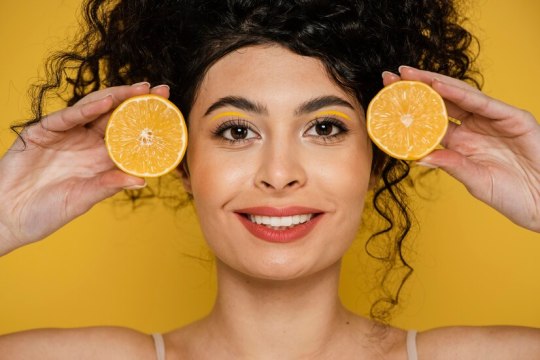
Introduction
Dark spots, also known as hyperpigmentation, are a common skin concern for many people. These spots can result from various factors, including sun exposure, aging, acne, and hormonal changes. While there are numerous commercial products available to address dark spots, natural remedies often offer a gentle and effective alternative. One such remedy is lemon juice. In this guest post, we will explore the benefits of using lemon juice to remove dark spots, how to use it effectively, and address some frequently asked questions.
The Power of Lemon Juice in Skincare
Nutrient-Rich Citrus:
Lemons are packed with essential vitamins and nutrients, particularly vitamin C, which is known for its skin-brightening properties. Vitamin C is an antioxidant that helps to reduce the appearance of dark spots and promotes an even skin tone.
Natural Exfoliant:
The citric acid found in lemon juice acts as a natural exfoliant. It gently removes dead skin cells, revealing fresher, brighter skin underneath. This exfoliating action helps to fade dark spots over time.
Antibacterial Properties:
Lemon juice has antibacterial properties that can help to prevent acne and other skin infections, which are often responsible for dark spots and blemishes.
How to Use Lemon Juice to Remove Dark Spots
Direct Application:
Squeeze fresh lemon juice and apply it directly to the dark spots using a cotton ball. Leave it on for about 10-15 minutes, then rinse off with lukewarm water. Repeat this process daily for the best results.
Lemon and Honey Mask:
Mix one tablespoon of lemon juice with one tablespoon of honey. Honey has moisturizing properties that counteract the drying effect of lemon juice, making this combination ideal for those with sensitive skin. Apply the mixture to the affected areas, leave it on for 20 minutes, and then rinse off.
Lemon and Sugar Scrub:
Create a natural scrub by mixing lemon juice with sugar. Gently massage this mixture onto the dark spots in a circular motion for a few minutes before rinsing off. This method combines the exfoliating benefits of sugar with the brightening effects of lemon juice.
Lemon and Aloe Vera Gel:
Mix a teaspoon of lemon juice with a tablespoon of aloe vera gel. Aloe vera is known for its soothing and healing properties. Apply the mixture to the dark spots, leave it on for 20 minutes, and then rinse off.
Precautions When Using Lemon Juice
Sun Sensitivity:
Lemon juice can make your skin more sensitive to sunlight, so it’s essential to apply sunscreen before going outside to avoid further pigmentation.
Patch Test:
Always perform a patch test before applying lemon juice to your face to ensure you do not have an adverse reaction.
Dilution:
If you have sensitive skin, consider diluting lemon juice with water or another soothing agent like honey or aloe vera to reduce the risk of irritation.
Conclusion
Using lemon juice is an effective and natural way to reduce the appearance of dark spots. Its rich vitamin C content and natural exfoliating properties make it a popular choice for those seeking to brighten their skin and achieve a more even complexion. However, it is crucial to use lemon juice properly and take necessary precautions to avoid skin irritation and sun sensitivity.
FAQs
Can lemon juice remove dark spots overnight?
No, removing dark spots is a gradual process. Consistent use of lemon juice over several weeks is required to see significant results.
Is lemon juice safe for all skin types?
While lemon juice is generally safe, it can cause irritation for those with sensitive skin. It is recommended to perform a patch test and dilute the juice if necessary.
How often should I use lemon juice on my dark spots?
You can use lemon juice on dark spots daily, but it is important to monitor your skin's reaction. If you experience any irritation, reduce the frequency to every other day.
Can I use bottled lemon juice instead of fresh lemon juice?
Fresh lemon juice is preferable as it contains more nutrients and fewer preservatives compared to bottled juice.
What should I do if my skin gets irritated?
If you experience irritation, discontinue use immediately and apply a soothing agent like aloe vera gel. If irritation persists, consult a dermatologist.
Can I use lemon juice on my entire face?
It’s better to apply lemon juice only on the affected areas to prevent potential irritation and dryness on areas without dark spots.
Does lemon juice work on all types of dark spots?
Lemon juice is effective on many types of dark spots, including those caused by sun exposure, acne, and aging. However, results can vary depending on the underlying cause and individual skin type.\
Read More
0 notes
Text
Discover the natural way to bring freshness
In recent years, there’s been a surge in the popularity of all natural deodorants, and for good reason. A consumers become more conscious of what they put on their bodies, they’re turning to products that are free from harmful chemicals and packed with natural ingredients. Here is the world of best all natural deodorants and explore what makes them a compelling choice for many. Traditional deodorants often contain a cocktail of synthetic chemicals like aluminum, parabens and artificial fragrances.
These ingredients have raised concerns about potential health risks, including skin irritation, hormone disruption and even links to certain health conditions. On the other hand, all natural deodorants rely on ingredients sourced from nature, such as baking soda, arrowroot powder, coconut oil, shea butter and essential oils. These formulations are free from synthetic additives, making them a safer and gentler option for sensitive skin. Natural deodorants are formulated with skin friendly ingredients that help to soothe and nourish the delicate underarm area.
Say goodbye to irritation and discomfort caused by harsh chemicals. Contrary to popular belief, natural deodorants are just as effective at combating odors as their conventional counterparts. Ingredients like baking soda and essential oils neutralize odor causing bacteria, keeping you feeling fresh all day long. By avoiding the use of potentially harmful chemicals, you’re making a proactive choice to support your overall health and well-being. Plus, many natural deodorant brands are cruelty free and environmentally friendly, so you can feel good about your purchase. With the growing demand for all natural products, the market for natural deodorants has expanded significantly. From small batch artisanal brands to establish names in the industry, there’s a shortage of options to choose from. When selecting a natural deodorant, it’s essential to consider factors such as scent preferences, texture and any specific akin concerns you may have.
Transiting to a natural deodorant may require an adjustment period as your body detoxifies form the chemicals present in conventional deodorants. During this time, you may experience increased sweating or odor as your body recalibrates. However, with patience and consistency, many people find that their bodies adapt and they experience the long-term benefits of using natural products. When it comes to natural deodorants, essential oils play a crucial role in not only providing pleasant scents but also offering skin types. Let us delve into the world of essential oils used in natural deodorants and how they can affect various skin types. Lavender oil, soothing and balancing, this oil is a popular choice in natural deodorants for its calming and balancing properties. It’s well suited for all skin types, including sensitive skin, thanks to its gentle nature. Lavender oil helps to soothe irritation and inflammation while providing a subtle, floral fragrance that appeals to many. Tea tree oil: antibacterial powerhouse, this oil is prized for its potent antibacterial properties, making it an excellent choice for combating odor causing bacteria. It’s particularly beneficial for oily or acne prone skin, as it helps to regulate sebum production and prevent breakouts. However, tea tree oil can be too strong for some individuals, especially those with very sensitive skin, so,
It’s essential to use it in moderation. Citrus oil (lemon, orange, grapefruit): energizing and refreshing, citrus oils like lemon, orange and grape fruit are invigorating and refreshing, making them popular choices for natural deodorants. They provide a burst of energy and help to mask odor with their bright, fruity scents. However, citrus oils can be photosensitive, meaning they can increase the skin’s sensitivity to sunlight and potentially cause irritation, especially for those with sensitive or sun damaged skin. Eucalyptus oil: cooling and invigorating, this oil has a cooling sensation on the skin, making it a refreshing choice for its antiseptic properties, which help to fight bacteria and keep odor at bay. Eucalyptus oil is generally well- tolerated by most skin types, but individuals with very sensitive skin may want to do patch test it first to ensure compatibility.
Coconut oil is a staple ingredient in many natural deodorants for its moisturizing and nourishing properties, it helps to keep the skin hydrated and smooth while providing a light, tropical scent. Coconut oil is suitable for most skin types, but those with acne prone skin may want to us it sparingly, as it can be comedogenic for some individuals. When selecting a natural deodorant based on essential oils, it’s essential to consider your skin type and any specific skin, opt for gentle oils like lavender or chamomile. For oily or acne prone skin, tea tree oil and citrus oil can be beneficials. Essential oils are not only prized for aromatic qualities but also for their skincare benefits. When incorporated into natural deodorants India, they can provide effective odor control while catering to different skin types. By understanding the properties of various essential oils, you can choose a natural deodorant that not only keeps you feeling fresh but also support the health and balance of your skin.
0 notes
Text
Following up to my speculative biology ideas for elves, a list of speculative ecology/other subjects for landscapes and non elven flora and fauna. These range from alternate rules of biology to just plain fantasy to completely realistic phenomena I just think would be cool in Arda.
This is just a small selection of ideas I want to explore and there will be second parts of both my elven post and this one!
Like the last list, these are more jotting down ideas, please please feel free to give me any to elaborate on!
Mammoths on the Helcaraxë and other cold reaches. Tolkien talks of all creatures that walk or have ever walked the earth existing in Valinor and throughout Arda hence prehistoric and extinct species can also exist here. I do also headcanon smaller herds of woolly mammoths and woolly rhinos in northern Hithlum and north of greater Beleriand.
Early cenozoic aquatic birds such as Hesperornis off the coasts of Balar and Alqualondë.
Enchanted orchards of Valinor; large, seemingly abandoned self containing gardens and orchards. There are fruit tree orchards hidden behind ivy covered walls; some always filled with Autumn breezes, citrus groves always kept warm and bright lined with lemon trees and deep green grass. Except for the Maia who tend them, the only beings who enter the orchards are elves who do so, usually by mistake.
There are places throughout Arda where the Music was not well, loud, enough. They can be the size of a footstep or a field and are not fully connected to the space time continuum. Those who tread on them will end up elsewhere in time or space and will never realize what had happened.
In the great expanses of unexplored Valinor, there are coves, glens, lagoons, and all sorts of other places that seem shift and change, being there one day and not the next. Even while walking through familiar, charted territory, there is always the possibility of ending up in a hidden clearing, covered in hanging mosses and with strange lights all around.
The forests of Arda are full of strange, sometimes dark creatures that have never been properly documented. They are the strange hybrids of Yavanna’s creations and Melkor’s corruption and a few have escaped the eyes of even the Ainur.
The underground lakes of Middle Earth, especially around Angband contain blind, hungry beings, nourished by the volcanic soils. Strange fungi and lichen stick to the walls of the caverns and passageways beneath the fortress. Fire loving Salamanders are far from the strangest of creatures there.
There are hot springs in several locations in Beleriand South of the Ered Wethrin (there are many in the Ered Wethrin of course but these are not exactly relaxation destinations). Namely in Himring, throughout Hithlum, north of Barad Eithel, parts of Dorthonion, in the caves of Androth, and parts of the Ered Luin. Not all of these are used by residents and not all maintain safe temperatures or conditions but some do! In many parts of Northern Beleriand, they're used for bathing and communal relaxation. There are other springs throughout the March of Maedhros and I like the idea of Himring being built around a hot spring. There are hot and warm springs in both Nargothrond and Menengroth. The definition of warm springs differs from hot springs only in average temperature
The caves of Menengroth and Nargothrond allow elves and others access to the strange wonders of the underground world of Middle Earth. They are lit by lanterns and by certain bioluminescent plants. There are windows in key areas that allow sunlight to filter into some of the larger halls and though there are small gardens of species that do not require direct sunlight, some are stationed in the areas where sunlight filters in. A small tributary of the river Narog flows directly through one of the great halls of Nargothrond. Its flora and fauna remain untouched by the elves and algae and aquatic plants as well as small fish, salamanders in their early stages, and stranger creatures are visible to see for those who walk along it.
In realms with Ainur or certain Eldar rule, natural life may not follow typical laws. Melian has great influence over the biodiversity and climate of Doriath for example even without meaning to.
Chemical reactions causing glimmering or colorful water. Elves learn carefully when this has occurred due to natural phenomena and when it is the result of unnatural influence or Ainur presence.
Salt lakes and landlocked waters mimicking ocean conditions
Bioluminescence
40 notes
·
View notes
Text
How to Create a Balanced Vegan Diet with Proper Nutrient Intake
Embracing a vegan lifestyle comes with numerous benefits, including ethical considerations, environmental sustainability, and potential health advantages. However, ensuring a well-balanced vegan diet that meets all your nutritional needs requires thoughtful planning. In this comprehensive guide, we'll explore the essential nutrients for a vegan diet, discuss potential challenges, and provide practical tips to help you create a balanced and nutritionally rich plant-based eating plan.
Essential Nutrients in a Vegan Diet
1. Protein:
Protein is crucial for maintaining and repairing tissues. While animal products are rich in complete proteins, plant-based sources like legumes, tofu, tempeh, quinoa, and a variety of nuts and seeds can provide the necessary amino acids for vegans.
2. Iron:
Plant-based iron, found in foods like lentils, beans, tofu, and spinach, may be less readily absorbed than iron from animal sources. Combining iron-rich foods with vitamin C-rich options, such as citrus fruits or bell peppers, enhances absorption.
3. Calcium:
Vital for bone health, calcium is abundant in leafy green vegetables like kale and collard greens, as well as in fortified plant milks, tofu, and almonds .
4. Vitamin :
Essential for nerve function and the production of red blood cells, vitamin is primarily found in animal products. Vegans should consider fortified foods or supplements to meet their requirements.
5. Omega-3 Fatty Acids:
Essential for heart health and brain function, omega-3 fatty acids can be obtained from flaxseeds, chia seeds, hemp seeds, and walnuts. Algal oil supplements are also available for a direct source of vegan-friendly omega-3s.
6. Zinc:
Crucial for immune function and wound healing, zinc is present in legumes, seeds, nuts, and whole grains. However, phytates in plant foods can inhibit zinc absorption, so soaking, fermenting, or sprouting these foods can enhance availability.
7. Vitamin D:
While vitamin D is primarily obtained from sunlight, it can be challenging for vegans to meet their needs. Fortified plant milks or vitamin D supplements are viable options.
8. Iodine:
Essential for thyroid function, iodine can be obtained from iodized salt or seaweed. However, iodine levels in plant foods can vary, and it's essential to monitor intake.
Tips for Creating a Balanced Vegan Diet
1. Diversify Your Plate:
Aim for a variety of fruits, vegetables, whole grains, legumes, nuts, and seeds to ensure a broad spectrum of nutrients. Different plant foods offer unique benefits, and diversity helps cover nutritional gaps .
2. Optimize Protein Intake:
Include a combination of protein-rich plant foods throughout the day. Complementing grains with legumes or nuts and seeds can enhance the amino acid profile and support protein needs.
3. Consume Iron-Rich Foods with Vitamin C:
Pair iron-rich foods like lentils or tofu with vitamin C sources. This combination improves iron absorption and helps prevent deficiencies.
4. Prioritize Calcium-Rich Foods:
Incorporate calcium-rich plant foods into your diet, such as fortified plant milks, tofu, and leafy greens. Ensure a sufficient intake for bone health.
5. Consider B12 Supplementation:
Due to the limited availability of B12 in plant foods, consider a reliable B12 supplement or include fortified foods in your diet. Regular B12 testing is advisable to monitor levels .
6. Include Omega-3-Rich Foods:
Integrate omega-3-rich foods like flaxseeds, chia seeds, hemp seeds, and walnuts into your meals. Consider algal oil supplements for a direct source of vegan omega-3s .
7. Optimize Zinc Absorption:
Soak, ferment, or sprout zinc-rich plant foods to reduce phytates that hinder absorption. Including a variety of zinc sources in your diet can also help meet your requirements .
8. Ensure Vitamin D:
Get regular sun exposure and consider fortified plant milks or vitamin D supplements to meet your needs. Adequate vitamin D is crucial for bone health and overall well-being .
9. Monitor Iodine Intake:
Use iodized salt or incorporate seaweed into your diet to ensure sufficient iodine intake. Regular monitoring can prevent deficiencies or excess intake .
Potential Challenges and Solutions
1. Nutrient Absorption:
Plant compounds like phytates and oxalates can hinder nutrient absorption. Cooking, soaking, or fermenting foods can reduce these compounds and enhance nutrient availability .
2. Vitamin B12 Deficiency:
B12 deficiency is common among vegans. Regularly check B levels and consider supplements or fortified foods to meet requirements.
3. Iron Absorption:
Non-heme iron from plant sources is less readily absorbed. Pairing iron-rich foods with vitamin C sources and avoiding consuming them with inhibitors like coffee or tea can enhance absorption .
4. Omega-3 Balance:
Maintaining a balance between omega-3 and omega-6 fatty acids is essential. Minimize processed oils and include more whole food sources of omega-3s to achieve optimal ratios.
5. Calcium from Absorption:
Some plant compounds can inhibit calcium absorption. Ensuring an adequate intake and diversifying calcium sources can mitigate potential issues.
Conclusion
Creating a balanced vegan diet that meets all nutritional needs is achievable with careful planning and a diverse selection of plant foods. By prioritizing a variety of nutrient-rich sources, optimizing food combinations, and considering supplementation where necessary, you can enjoy the numerous benefits of a vegan lifestyle while ensuring your health and well-being.
It's advisable to consult with a registered dietitian or healthcare professional, especially if you have specific dietary concerns, to tailor a vegan eating plan that suits your individual needs and goals.

1 note
·
View note
Text
Edible indoor plants
Introduction: In recent years, the trend of bringing nature indoors has gained significant momentum. Beyond just adding aesthetic appeal, indoor plants offer a myriad of benefits, from purifying the air to reducing stress levels. However, one aspect that's often overlooked is the potential for growing edible indoor plants. Imagine plucking fresh herbs or snacking on homegrown fruits right from the comfort of your living room. In this guide, we'll explore the world of edible indoor plants, offering insights into their cultivation and the variety of options available to transform your home into a mini indoor garden.
Why Choose Edible Indoor Plants? Edible indoor plants serve a dual purpose—they not only beautify your living space but also provide fresh, organic produce. Here are some compelling reasons to consider incorporating them into your home decor:
Sustainable Food Source: Growing your own edible plants reduces reliance on store-bought produce, promoting sustainability and reducing your carbon footprint.
Health Benefits: Freshly harvested herbs, fruits, and vegetables are rich in essential nutrients, offering unparalleled freshness and flavor compared to their store-bought counterparts.
Therapeutic Value: Engaging in indoor gardening has been linked to reduced stress levels and improved mental well-being. Tending to edible plants provides a sense of accomplishment and connection with nature.
Cost-Effective: Once established, many edible indoor plants require minimal maintenance and can continue to yield produce for an extended period, saving you money in the long run.
Popular Edible Indoor Plants:
Herbs: Basil, mint, parsley, chives, and cilantro are just a few examples of herbs that thrive indoors. They require ample sunlight and well-drained soil to flourish.
Salad Greens: Lettuce varieties such as leaf lettuce, spinach, and arugula can be grown edible indoor plants in containers or hanging baskets. They prefer cool temperatures and indirect sunlight.
Microgreens: These nutrient-packed seedlings are harvested at an early stage and can be grown indoors with minimal space requirements. Common varieties include kale, radish, and broccoli microgreens.
Citrus Trees: While they may require more space and sunlight, dwarf citrus trees such as Meyer lemon, lime, and calamondin can be grown indoors and yield fresh fruits with proper care.
Strawberries: Compact varieties of strawberries can be grown in hanging baskets or vertical planters, providing a delightful harvest of sweet berries throughout the growing season.
Cultivation Tips:
Choose containers with adequate drainage holes to prevent waterlogging.
Use well-draining potting mix formulated for indoor plants.
Place plants in areas with sufficient sunlight or supplement with grow lights.
Water plants regularly, allowing the soil to dry slightly between waterings.
Fertilize plants with a balanced liquid fertilizer according to package instructions.
Monitor for pests and diseases, addressing any issues promptly.
Conclusion: Incorporating edible indoor plants into your home decor not only adds a touch of greenery but also offers a sustainable source of fresh produce and enhances your overall well-being. Whether you're a seasoned gardener or a novice enthusiast, there's a wide range of options to suit every skill level and living space. So why not embark on the journey of indoor gardening and reap the rewards of homegrown goodness right at your fingertips? With a little care and dedication, you'll soon enjoy the bountiful harvest of your indoor oasis.
0 notes
Text
Edible indoor plants
Introduction: Bringing the joy of gardening indoors is not only possible but deliciously rewarding with edible indoor plants. Imagine plucking fresh herbs, flavorful fruits, or crisp salad greens right from your own home-grown garden. Whether you're an urban dweller or simply wish to supplement your kitchen with fresh produce year-round, cultivating edible plants indoors is an excellent option. In this guide, we'll explore a variety of edible indoor plants plants suitable for indoor cultivation, providing tips and insights to help you nurture your green thumb and savor the flavors of home-grown goodness.
Herbs: Herbs are among the most popular choices for indoor gardening due to their compact size, aromatic foliage, and culinary versatility. From basil and parsley to mint and thyme, a wide range of herbs thrives indoors given the right conditions. Place herb pots on sunny windowsills or under grow lights, ensuring they receive at least 6-8 hours of sunlight daily. Keep the soil consistently moist but not waterlogged, and trim the plants regularly to encourage bushy growth and prevent them from becoming leggy.
Salad Greens: Fresh, crisp salad greens straight from your indoor garden add a delightful touch to any meal. Lettuce varieties like loose-leaf, butterhead, and romaine are well-suited for indoor cultivation, as are spinach, kale, and arugula. Choose shallow containers or window boxes with well-draining soil, and provide ample sunlight or artificial grow lights to promote healthy growth. Harvest outer leaves as needed, allowing the edible indoor plants to continue producing new foliage for an ongoing supply of fresh greens.
Microgreens: Microgreens pack a nutritional punch and offer a burst of flavor in a petite package. These tender, young greens are harvested when they're just a few inches tall, making them perfect for indoor cultivation in small spaces. Popular microgreen varieties include kale, radish, broccoli, and sunflower shoots. Sow seeds densely in shallow trays filled with moistened potting mix, place them in a bright location, and keep the soil consistently moist. Harvest the microgreens with scissors once they develop their first true leaves, typically within 1-3 weeks of sowing.
Fruit-bearing Plants: While some fruit-bearing plants require more space and specialized care, several options thrive indoors, providing a delightful harvest of fresh fruit. Consider dwarf citrus trees such as Meyer lemon, calamondin orange, or kumquat, which can be grown in large containers indoors. Strawberries, blueberries, and figs are also suitable for indoor cultivation, provided they receive sufficient sunlight, proper watering, and occasional fertilization.
Conclusion: With the right selection of edible indoor plants and a bit of TLC, you can transform your living space into a flourishing oasis of fresh flavors and vibrant greenery. Whether you're a seasoned gardener or just starting out, experimenting with herbs, salad greens, microgreens, and even fruit-bearing plants indoors opens up a world of culinary possibilities. Embrace the joys of home-grown goodness and elevate your cooking with the wholesome bounty of your indoor garden.
0 notes
Text
Accelerate Your Fruit Tree Growth: Expert Tips for Cultivating Your Own Orchard
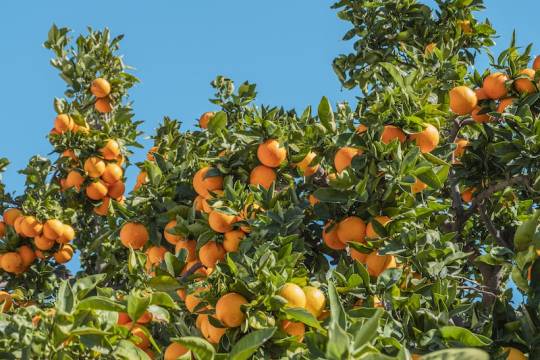
Are you ready to enjoy freshly picked apples, pears, oranges, or perhaps plums from your very own garden? Growing your own fruit trees quickly doesn't have to be a long and arduous job! In this guide, you'll get tips on how to select the fruit tree variety depending on the type of climate you're in, identifying the best spot in your garden to plant this new tree, and suggestions for caring and maintaining them. So get ready for all of the juicy goodness, as you learn how to grow your own fruit trees quickly!
Grow Your Own Fruit Trees Quickly: A Guide To Growing Fruit Trees
As an avid gardener, I've always been fascinated by the idea of growing my own fruit trees. The thought of plucking a ripe, juicy peach straight from the tree is enough to make my mouth water. But, as with any type of gardening, growing fruit trees takes time, patience, and a little bit of know-how. If you're eager to start your own orchard, read on for some tips on how to grow fruit trees quickly and successfully.
One of the most important things to consider when growing fruit trees is choosing the right location. Fruit trees need plenty of sunlight, good drainage, and protection from strong winds. Before planting your trees, take the time to assess your yard and find the best spot for them to thrive.
When it comes to selecting fruit trees for your orchard, consider your climate and the space you have available. Some fruit trees, like apples and pears, require a certain number of chill hours in order to produce fruit. Others, like citrus trees, need warm temperatures to thrive. Choose fruit trees that are well-suited to your specific growing conditions to ensure a bountiful harvest.
Proper planting and care are essential for the health and growth of your fruit trees. Make sure to plant your trees at the correct depth and spacing, and water them regularly, especially during their first year. Fertilize your trees as needed, and prune them annually to promote healthy growth and fruit production.
Don't be discouraged if your fruit trees don't produce fruit right away. It can take several years for a newly planted tree to reach maturity and start bearing fruit. Be patient and continue to care for your trees, and you'll be rewarded with a fruitful harvest in time.
If you're looking for more in-depth information on how to grow fruit trees, check out thiscomprehensive guide on fruit tree care and maintenance. With a little time and effort, you can enjoy the satisfaction of growing your own delicious fruit right in your backyard. Happy gardening!
Learn more about gardening with Taim.io!
0 notes